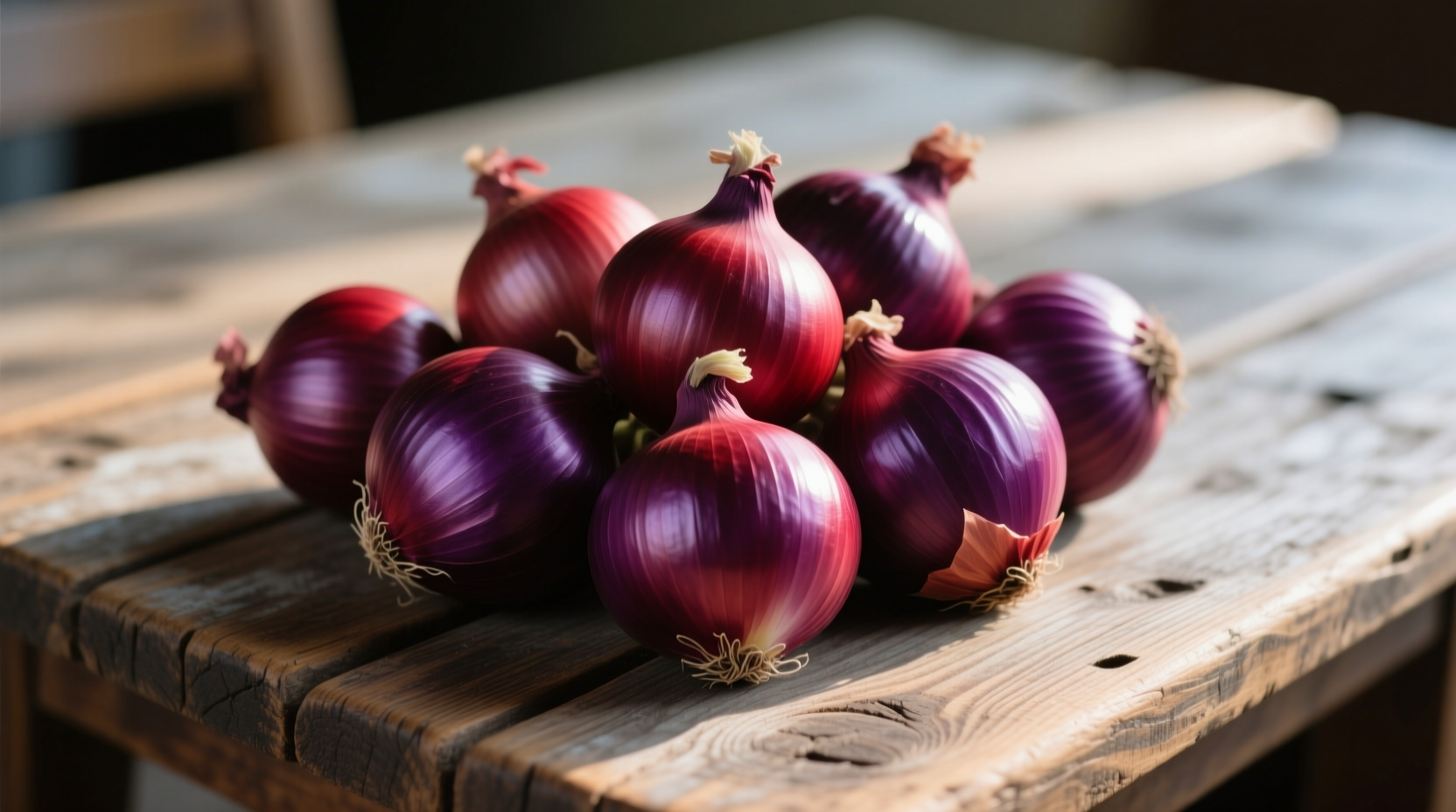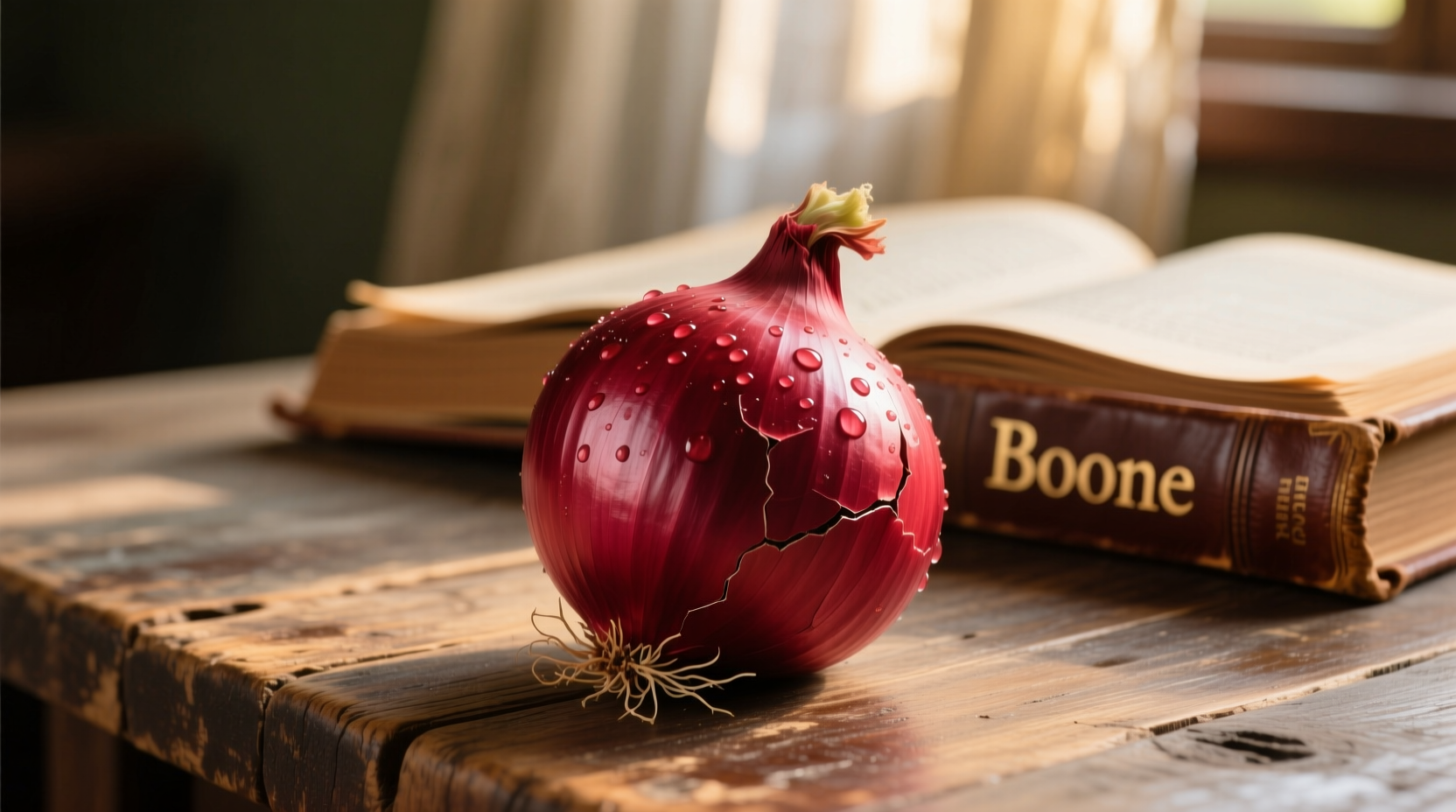When searching for "red onion boone," many home cooks and gardening enthusiasts encounter confusion. The straightforward truth is that no officially recognized "red onion boone" variety exists in agricultural records or seed catalogs. What you're likely seeking relates to the rich agricultural history of Boone County, Illinois, once known as the "Onion Capital of the World"—though its famous crop was the white, not red, onion variety.
Understanding the Boone County Onion Legacy
Before exploring red onions specifically, it's crucial to clarify the historical context that causes this common search confusion. Boone County, Illinois developed a thriving onion industry in the early 20th century, becoming so prominent that it earned the nickname "Onion Capital of the World" by the 1920s. However, the signature variety was the Boone County White, not a red variety.
| Time Period | Key Developments | Production Significance |
|---|---|---|
| 1880-1900 | Initial cultivation by German immigrant farmers | Small-scale production establishing soil suitability |
| 1900-1920 | Railroad expansion enables wider distribution | Production grows to 1,500 acres annually |
| 1920-1940 | "Boone County White" becomes nationally recognized | Peak production at 2,500+ acres; 500,000+ sacks annually |
| 1940-Present | Decline due to soil depletion and competition | Commercial production virtually disappeared by 1960s |
This historical timeline explains why "Boone" appears in onion-related searches, though always connected to white varieties. The University of Illinois Extension documents how these sweet, mild white onions became so prized that they were shipped nationwide via the Chicago Great Western Railway.
Red Onions: Characteristics and Modern Varieties
While Boone County specialized in white onions, red onions have their own distinct characteristics and growing regions. True red onions feature deep purple-red skin and reddish flesh, with a flavor profile that ranges from sweet to pungent depending on the specific variety.

Unlike the historical Boone County White, modern red onion varieties include:
- Red Wing - Known for excellent storage qualities
- Red Baron - Intense color and robust flavor
- Stuttgarter - Sweet variety popular for fresh eating
- Walla Walla Sweet Red - Mild flavor with high sugar content
Where Red Onions Thrive Today
While Illinois' onion legacy continues through events like the Boone County Onion Festival, commercial red onion production has shifted primarily to:
- California (producing approximately 85% of U.S. onions)
- Washington state (particularly the Walla Walla region)
- Georgia (Vidalia region, though primarily sweet yellow)
- New York (Dutchess County red onions)
The USDA Agricultural Marketing Service reports that California's Central Valley provides the ideal combination of rich soil and climate for producing high-quality red onions with excellent storage characteristics.
Practical Guide to Selecting and Using Red Onions
Understanding the difference between historical references and modern varieties helps you make better choices for your kitchen. Here's what matters when selecting red onions today:
Selection Criteria
- Firmness - Should feel solid with no soft spots
- Color intensity - Deeper purple indicates better quality
- Dry outer skin - Should be papery and intact
- No sprouting - Sprouts indicate age and reduced quality
Culinary Applications
Red onions offer unique advantages in the kitchen that white or yellow varieties don't provide:
- Raw applications - Their vibrant color enhances salads, salsas, and garnishes
- Pickling - Retain beautiful color when pickled (try with apple cider vinegar)
- Grilling - Hold shape well and develop sweet flavor when grilled
- Storage - Typically last 3-4 weeks in cool, dry conditions
Nutritional Benefits of Red Onions
Beyond their visual appeal, red onions offer specific health advantages over other varieties. According to USDA FoodData Central, red onions contain higher levels of anthocyanins—the pigments responsible for their purple color—which function as powerful antioxidants.
Per 100g serving, red onions provide:
- 41 calories
- 9g carbohydrates
- 1.1g protein
- 1.7g fiber
- 7.4mg vitamin C (12% of daily value)
- Significant quercetin and anthocyanin content
These compounds have been studied for potential benefits including reduced inflammation and improved heart health, making red onions not just colorful but nutritionally valuable additions to your diet.
Common Misconceptions Clarified
Several myths persist about "red onion boone" that deserve clarification:
- Myth: Boone County ever produced a signature red onion variety
Reality: Historical records consistently reference only white varieties - Myth: "Boone" is a variety name for red onions
Reality: No seed company or agricultural registry recognizes this designation - Myth: Red onions from Boone County have unique properties
Reality: Soil composition affects flavor, but no evidence supports special properties
Where to Find Quality Red Onions
For the best red onions, consider these sources:
- Local farmers markets - Especially in late summer through fall
- Specialty grocery stores - Often carry heirloom varieties
- Growing your own - Varieties like Red Wing perform well in home gardens
- Seasonal availability - Peak season runs from August to November
When shopping, look for onions with tight, dry skins and no signs of moisture or mold. The neck should be fully dry and closed—this indicates proper curing and longer storage potential.
Conclusion: Embracing Red Onions in Modern Cooking
While the "red onion boone" search reflects understandable historical curiosity, today's cooks have access to excellent red onion varieties that bring both visual appeal and distinctive flavor to dishes. Understanding the difference between historical references and modern varieties helps you make informed choices for your kitchen. Whether you're creating vibrant salads, pickling for long-term storage, or simply adding crunch to sandwiches, quality red onions enhance both the appearance and taste of your culinary creations.











 浙公网安备
33010002000092号
浙公网安备
33010002000092号 浙B2-20120091-4
浙B2-20120091-4